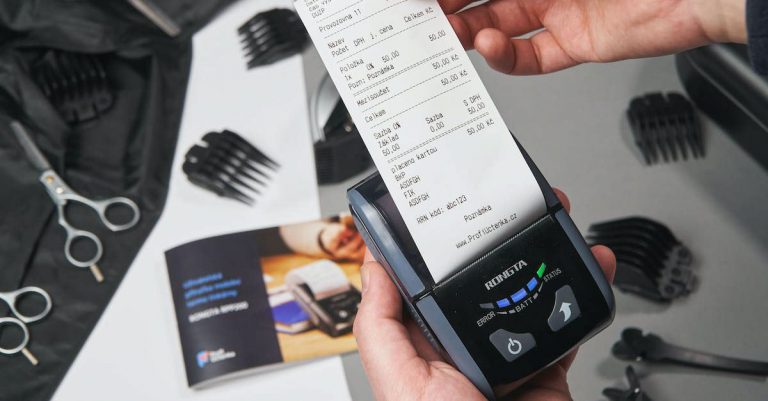For hotel owners and operators, profitability is a major concern. With high fixed costs and variable occupancy, what profit margins can hotels expect? Industry averages provide a benchmark, but many factors impact individual hotel profitability.
Understanding typical hotel profit margins is key to exploring the hotel business or investing in the hospitality sector. This comprehensive updated look examines the numbers and drivers shaping hotel profitability.
Hotel Profit Margin Statistics
Industry Averages
Several factors come into play regarding the average profit margin for hotels. According to industry data, the average profit margin for hotels typically falls between 5% and 15%.
However, it is important to note that this can vary greatly depending on the location, size, and type of hotel.
For example, luxury hotels have higher profit margins than budget hotels. This is because luxury hotels can charge higher room rates and offer additional services and amenities, contributing to their overall revenue.
Additionally, hotels in popular tourist destinations or cities with high demand often have higher profit margins due to increased occupancy rates and the ability to charge premium prices.
Also Read: Are Luxury Hotels Profitable?
Metrics Like RevPAR and GOPPAR

When analyzing hotel profit margins, industry experts consider Revenue Per Available Room (RevPAR) and Gross Operating Profit Per Available Room (GOPPAR).
RevPAR is calculated by dividing a hotel’s total room revenue by the number of available rooms. It provides insights into a hotel’s ability to generate revenue from its rooms. Higher RevPAR indicates higher profitability.
GOPPAR, on the other hand, considers not only room revenue but also other revenue streams such as food and beverage, spa services, and conference room rentals. It provides a more comprehensive picture of a hotel’s overall profitability.
By analyzing these metrics, hotel owners and investors can better understand their profit margins and make informed decisions to optimize revenue and operations.
Trends Over Time
Over the years, the hotel industry has seen fluctuations in profit margins due to various factors such as economic conditions, competition, and changing consumer preferences.
For instance, during periods of economic recession, hotels may experience lower profit margins as consumers cut back on travel and discretionary spending. On the other hand, during periods of economic growth, hotels may see an increase in profit margins as travel demand rises.
Furthermore, the emergence of online booking platforms and sharing economy services like Airbnb has disrupted the traditional hotel industry. While these platforms provide convenience and affordability to travelers, they also pose challenges to hotels in terms of pricing and competition.
As a result, hotel owners and managers need to continually adapt to these changing trends and find innovative ways to improve their profit margins in a highly competitive market.
For more information on hotel profit margin statistics, visit industry-leading websites like Statista or Hotel News Now.
Also Read:
Is It Cheaper To Book A Hotel Directly Or Online?
How To Book A Hotel Online Without Paying: A Comprehensive Guide
Factors Impacting Hotel Profitability
Location and Target Market
The location of a hotel plays a crucial role in determining its profitability. Hotels in popular tourist destinations or business hubs often have higher profit margins than those in less desirable locations. Additionally, the target market of a hotel also affects its profitability.
Hotels that cater to luxury travelers or corporate clients usually have higher profit margins due to their ability to charge premium rates for their services.
Hotel Size and Class
The size and class of a hotel can greatly impact its profitability. Larger hotels with more rooms and facilities have the potential to generate higher revenue, leading to larger profit margins. Similarly, hotels classified as upscale or luxury tend to have higher profit margins than budget or economy hotels.
Upscale hotels can charge higher room rates and offer additional services such as spas, restaurants, and conference facilities, contributing to profitability.
Occupancy Rates
The occupancy rate of a hotel is a key factor in determining its profitability. A high occupancy rate indicates that a hotel consistently attracts guests and fills its rooms, resulting in higher revenue.
On the other hand, a low occupancy rate can lead to decreased revenue and reduced profit margins. Hotels employ various strategies to increase occupancy rates, such as targeted marketing campaigns, partnerships with online travel agencies, and competitive pricing and packages.
Staffing and Operations

The efficiency of a hotel’s staffing and operations can significantly impact its profitability. Effective management practices, streamlined operations, and well-trained and motivated staff can lead to cost savings and increased productivity, ultimately resulting in higher profit margins.
Hotels that prioritize customer service and strive to exceed guest expectations often benefit from positive reviews and repeat business, further enhancing their profitability.
Also Read: Hotel Staff And Guest Relations: Understanding Boundaries And Policies
Strategies for Improving Profit Margins
Dynamic Pricing and Revenue Management
Dynamic pricing and revenue management are effective strategy for improving hotel industry profit margins. This involves adjusting room rates based on demand and other factors such as seasonality, events, and competition.
By implementing a dynamic pricing strategy, hotels can optimize revenue by charging higher rates during peak periods and offering discounted rates during slower times. This strategy allows hotels to maximize revenue and occupancy rates, ultimately leading to higher profit margins.
Ancillary Fees and Revenue Streams
Another way for hotels to improve profit margins is by implementing ancillary fees and creating additional revenue streams. Ancillary fees can include charges for services such as parking, Wi-Fi, room upgrades, and late check-outs.
By offering these optional extras, hotels can increase revenue without significantly increasing their operating expenses. Additionally, hotels can explore other revenue streams, such as partnerships with local attractions or offering unique experiences to guests.
These additional revenue sources can contribute to higher profit margins.
Managing Operating Expenses
Managing operating expenses is crucial for hotels to maintain healthy profit margins. This includes closely monitoring and controlling labor, utilities, and supplies costs. Implementing energy-efficient practices, optimizing staff schedules, and negotiating favorable contracts with suppliers are some ways hotels can reduce expenses.
By keeping a close eye on operating expenses and finding ways to streamline operations, hotels can improve their bottom line and increase profit margins.
Outlook: Emerging Profit Drivers

As the hospitality industry evolves, hotels constantly seek new ways to increase their profit margins. In this ever-changing landscape, several emerging profit drivers are shaping the future of the hotel industry.
These drivers include technology and automation, changing traveler expectations, and the rise of experiential travel and local authenticity.
Technology and Automation
Technology has become integral to the hotel industry, revolutionizing hotels’ operations and enhancing the guest experience. From online booking platforms to mobile check-ins and smart room features, hotels are leveraging technology to streamline operations and provide a seamless stay for guests.
This improves efficiency and reduces labor costs, contributing to higher profit margins. According to a study by HospitalityNet, hotels that embrace technology and automation can increase their profit margins by up to 15%.
Changing Traveler Expectations
Traveler expectations have evolved significantly, and hotels adapt to meet these changing demands. Today’s travelers seek personalized experiences, convenience, and value for money.
Hotels invest in amenities such as fitness centers, spa facilities, and high-speed internet to stay competitive. They also offer unique services like local tours and cultural experiences to cater to the growing demand for experiential travel.
By meeting these expectations, hotels can attract more guests and command higher room rates, ultimately driving their profit margins upwards.
Experiential Travel and Local Authenticity
The rise of experiential travel and the desire for local authenticity have significantly impacted the hotel industry. Travelers are no longer satisfied with cookie-cutter experiences; they want to immerse themselves in the local culture and explore unique destinations.
Hotels that can provide authentic local experiences, such as partnering with local businesses or organizing cultural events, are attracting a new breed of travelers.
By tapping into the growing demand for experiential travel, hotels can differentiate themselves from the competition and potentially charge premium rates, leading to higher profit margins.
Conclusion
While individual hotels show wide variability, average industry profit margins range from 5-15%. Key metrics, location, target market, and revenue strategies impact the bottom line.
By benchmarking performance and adapting to emerging trends, hoteliers can optimize profits. But balancing operational expenses versus guest experience remains an art and science.






